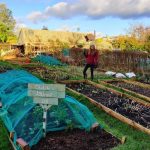Here are some of the most common Seed Starting Mistakes you can avoid to improve your seed germination rate and propagate healthy new plants.
These are some of the most common Seed Starting Mistakes many new gardeners make. This guide will help you avoid them and encourage you to grow seedlings that will survive the test of time.
Check out some amazing seed starting hacks here
Most Common Seed Starting Mistakes to Avoid
1. Placing Incorrectly
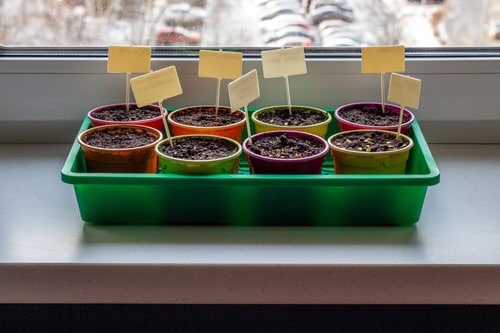
Plant seeds at a spot in full view or where you often visit, so you do not forget to take care of them. The ideal place would be a countertop, table, windowsill, greenhouse, or a separate seed sowing space in your garden. Any sheltered space with the correct amount of warmth, humidity, and light conditions will work.
Pro Tip: It is best to label your seeds and include sowing dates to monitor them better and know when to expect germination. This also prevents any confusion as sometimes it becomes hard to tell the difference between types of seedlings once they germinate.
2. Wrong Soil
Seeds are sensitive to the soil type, and using garden soil might expose them to pests and pathogens. It is always good to use a seed starting mix or soilless growing medium that is not rich. A well-draining medium also allows the gentle roots of young plants to penetrate easily.
3. Planting Seeds Deep in the Soil
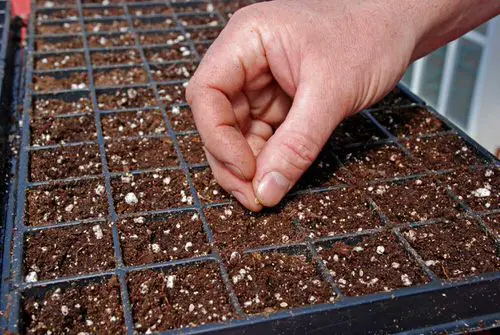
Before you plant your seeds, please read the instructions carefully, either online or on the seed packets about the depth. However, the rule of thumb is to plant the seeds at a depth equal to twice or thrice their width.
Pro Tip: If not too certain, it is always a safe bet to place the seeds too shallow than too deep.
4. Not Starting at the Right Time
If you start your seeds too early in the season, then they might overgrow or die before the right transplanting time arrives.
On the contrary, if you start too late, then chances are they might become weak and puny at the time of planting. They may also not be very prepared to fight against the changing weather, weeds, pests, and diseases.
Pro Tip: The easiest way to figure out when to plant is to make your own personalized calendar. It should be based on your local weather. Label all the herbs, flowers, fruits, and vegetables you are growing to help you manage them much better. You can also join gardening forums and clubs in your area to learn when others are planting.
5. Improper Watering
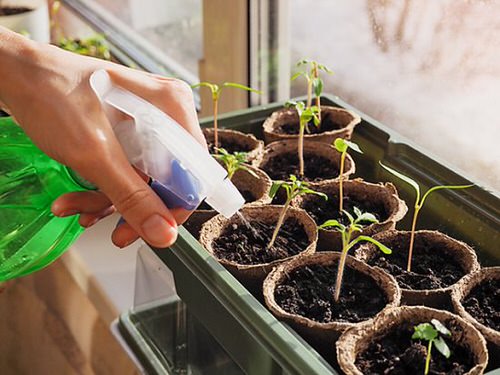
Too much moisture and wet soil induce rotting and can cause the seedlings to die. It is best to make a properly balanced routine to water your germinating plants.
Similarly, infrequent watering, not watering on time, is also something you should avoid as irregular watering and drier soil thwart the germination process.
The best trick to follow is pre-wetting the seed starting mix and after sowing the seeds, always use a sprayer bottle instead of a watering can to mist around your seeds. This will ensure you don’t end up pouring too much water, which can displace the seeds or uproot the baby plants.
Tip: To expedite the germination process, you can cover the containers with a plastic wrap or dome to allow the moisture to germinate the seeds. Once you start noticing the seedlings, remove the cover immediately.
6. Too Much or Too Little Sunlight
Too much sunlight can never do any good to seeds and transplants. Exposure to full sun can burn delicate baby plants, which is why it’s important to avoid afternoon sunlight.
On the other hand, if the seeds are not getting enough light, they won’t sprout, and you will end up with an empty seed tray.
So what’s the solution? Simple–Provide them bright indirect light; exposure to gentle morning sun is also beneficial. For the best growth, keep them in the Eastern direction.
If you are growing them indoors and don’t have access to natural light, you can expose them to the grow lights. As these lights can be easily adjusted, you can tailor them according to the requirement of different seed types.
7. Using a Fertilizer

Once the seeds sprout, you don’t have to feed them immediately. They have all the nutrients to sustain for the coming weeks. The best way is to fertilize them is after their first one or two sets of true leaves appear. Start with a one-quarter dose of balanced liquid feed.
8. Not Soaking Large Seeds
When planting larger seeds like melons and gourds or any other with hard covering, it is always a good idea to soak them overnight to help them sprout more quickly. You should check each type of seed you purchase before planting–whether it is a good fit for scarification or not.
You can also pre-soak your seeds in Hydrogen Peroxide or Vinegar for faster germination!
9. Growing So Many Seeds Together
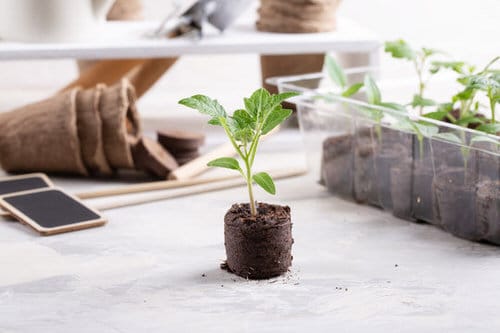
Crowding too many seeds in a single pot will create competition. They will end up fighting for nutrients, root space, and water. If you are using tiny pot or tray cells, go with one seed per pot rule. For medium-sized planter boxes, you can go with a maximum of 3-4 seeds.
In window boxes, large planters, and raised beds, follow the recommended spacing between each seed. Also, make sure you are not sowing different types of seeds together.
10. Not Using Viable Seeds
Avoid planting too old seeds to save your time–you’ll have less success. One way to know if the seeds are viable or not is to take a water test. Take your seeds and submerge them in water for 15-20 minutes. If the seeds sink, it means they are viable and will be able to germinate in the right conditions. Seeds that float will have a low germination rate.
11. Not Caring About Temperature
Temperature plays a crucial role when it comes to seed germination. According to IOWA STATE UNIVERSITY Extension–“Most seeds germinate when the soil temperature is between 68 to 86 F (20 to 30 C). Once germination occurs, the optimum growing temperature for the seedling is about 10 F cooler than the optimum germination temperature.”

